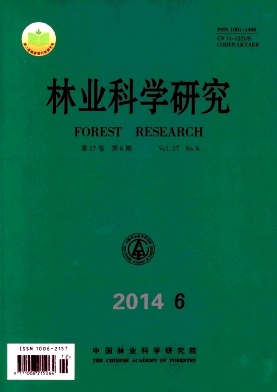|
[1]
|
Burtis C A, Ashwood E R, Aldrich J E. Tietz fundamentals of clinical chemistry[M]. WB Saunders company, 1996. |
|
[2]
|
Gibney M J, Vorster H H, Kok F J. Introduction to human nutrition[J]. The human nutrition textbook series (1), 2002. |
|
[3]
|
Voet D, Voet J G. Biochemistry. Hoboken[J]. John Wiley & Sons, 2004,1:591. |
|
[4]
|
Mattson F H, Grundy S M. Comparison of effects of dietary saturated, monounsaturated, and polyunsaturated fatty acids on plasma lipids and lipoproteins in man.[J]. Journal of lipid research, 1985,26(2):194-202. |
|
[5]
|
Goodnight S H, Harris W S, Connor W E, et al. Polyunsaturated fatty acids, hyperlipidemia, and thrombosis.[J]. Arteriosclerosis, Thrombosis, and Vascular Biology, 1982,2(2):87-113. |
|
[6]
|
王华志, 王道波, 李秋霖, 等. 油脂中脂肪酸成分与人体健康[J]. 粮油加工, 2010(06):16-19.
|
|
[7]
|
何 钊, 冯 颖, 孙 龙, 等. 黄粉虫多糖响应面法提取及抗氧化活性[J]. 食品与生物技术学报, 2011(05):641-647.
|
|
[8]
|
翁 梁, 温 鲁, 杨 芳, 等. 不同提取方法对蛹虫草多糖抗氧化性的影响[J]. 食品科技, 2008(11):180-182.
|
|
[9]
|
Kerridge A, Lappin Scott H, Stevens J R. Antibacterial properties of larval secretions of the blowfly, Lucilia sericata[J]. Medical and Veterinary Entomology, 2005,19(3):333-337. |
|
[10]
|
Casteels P, Ampe C, Jacobs F, et al. Apidaecins: antibacterial peptides from honeybees.[J]. The EMBO journal, 1989,8(8):2387. |
|
[11]
|
陈淑媛. 蝇蛆油脂化学成分、理化特性及其对动物实验性烫伤治疗药效的研究[D]. 华中农业大学, 2007.
|
|
[12]
|
廉振民, 李文宾, 刘万霞, 等. 中国昆虫油脂的开发利用及研究现状[J]. 延安大学学报:自然科学版, 2008(01):59-63.
|
|
[13]
|
Van Huis A, Van Itterbeeck J, Klunder H, et al. Edible insects: future prospects for food and feed security[J]. FAO Forestry Paper (FAO), 2013. |
|
[14]
|
王纲荣, 周克明, 陈红兵, 等. 南昌口岸蝇、蚊类的本底调查报告[J]. 中国国境卫生检疫杂志, 2001(05):287-289.
|
|
[15]
|
余小辉, 涂小云. 丝光绿蝇研究概况[J]. 中国媒介生物学及控制杂志, 2010(04).
|
|
[16]
|
张海生, 陈锦屏. 蜂蛹脂肪超声波提取工艺研究及脂肪酸成分分析[J]. 天然产物研究与开发, 2007(02):299-302.
|
|
[17]
|
段爱莉, 高贵田, 潘 静. 气相色谱-质谱联用法对蚕蛹油中脂肪酸成分分析[J]. 蚕桑通报, 2011(01):14-16.
|
|
[18]
|
林春梅, 周鸣谦. 不同方法提取蚕蛹油的GC-MS分析[J]. 中国粮油学报, 2013(01):112-116.
|
|
[19]
|
李福伟, 王文亮, 李恩霞, 等. GC-MS法测定黄粉虫脂肪酸组成及含量的研究[J]. 食品研究与开发, 2008(10):92-94.
|
|
[20]
|
蒙松年, 肖小芹, 汪世平, 等. 美洲大蠊中脂溶性化学成分的GC-MS研究[J]. 中南药学, 2008(01):23-25.
|
|
[21]
|
郭 澄, 魏道智. 超临界萃取蝼蛄脂肪酸成分及其气相色谱-质谱分析[J]. 分析化学, 2006(S1):15-18.
|
|
[22]
|
张 旭, 董晓萍, 邓斌贝, 等. GC-MS分析蜣螂油脂的化学成分[J]. 华西药学杂志, 2006(03):247-248.
|
|
[23]
|
刘可春, 侯海荣, 韩利文, 等. 黄粉虫脂肪油中脂肪酸的GC-MS分析[J]. 中国食物与营养, 2008(10):30-31.
|
|
[24]
|
Lands W E. Long-term fat intake and biomarkers.[J]. The American journal of clinical nutrition, 1995,61(3):721S-725S. |
|
[25]
|
Okada T, Furuhashi N, Kuromori Y, et al. Plasma palmitoleic acid content and obesity in children[J]. The American journal of clinical nutrition, 2005,82(4):747-750. |
|
[26]
|
McGarry J D, Dobbins R L. Fatty acids, lipotoxicity and insulin secretion[J]. Diabetologia, 1999,42(2):128-138. |
|
[27]
|
Maedler K, Spinas G A, Dyntar D, et al. Distinct effects of saturated and monounsaturated fatty acids on β-cell turnover and function[J]. Diabetes, 2001,50(1):69-76. |
|
[28]
|
Lichtenstein A H, Appel L J, Brands M, et al. Diet and lifestyle recommendations revision 2006 A scientific statement from the American Heart Association nutrition committee[J]. Circulation, 2006,114(1):82-96. |
|
[29]
|
Alonso A, Martínez-González M á. Olive oil consumption and reduced incidence of hypertension: the SUN study[J]. Lipids, 2004,39(12):1233-1238. |
|
[30]
|
Perona J S, Vögler O, Sánchez-Domínguez J M, et al. Consumption of virgin olive oil influences membrane lipid composition and regulates intracellular signaling in elderly adults with type 2 diabetes mellitus[J]. The Journals of Gerontology Series A: Biological Sciences and Medical Sciences, 2007,62(3):256-263. |
|
[31]
|
Terés S, Barcelo-Coblijn G, Benet M, et al. Oleic acid content is responsible for the reduction in blood pressure induced by olive oil[J]. Proceedings of the National Academy of Sciences, 2008,105(37):13811-13816. |
|
[32]
|
Wongtangtintharn S, Oku H, Iwasaki H, et al. Effect of branched-chain fatty acids on fatty acid biosynthesis of human breast cancer cells.[J]. Journal of nutritional science and vitaminology, 2004,50(2):137-143. |
|
[33]
|
Wolk A, Vessby B, Ljung H, et al. Evaluation of a biological marker of dairy fat intake.[J]. The American journal of clinical nutrition, 1998,68(2):291-295. |
|
[34]
|
Smedman A E, Gustafsson I, Berglund L G, et al. Pentadecanoic acid in serum as a marker for intake of milk fat: relations between intake of milk fat and metabolic risk factors[J]. The American journal of clinical nutrition, 1999,69(1):22-29. |





 DownLoad:
DownLoad: